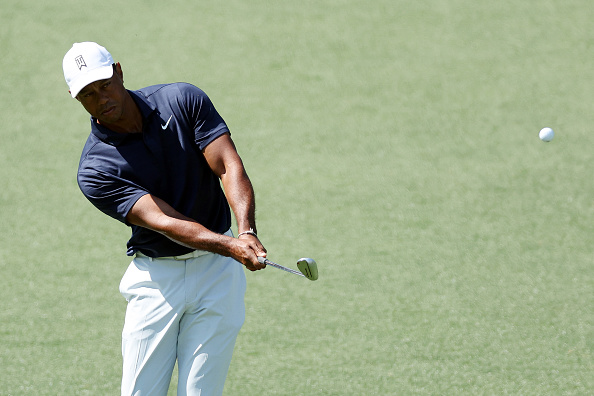During the NFL Draft, the Minnesota Vikings built up assets to help construct the future of their franchise.
Wow, what a draft for the Minnesota Vikings. Heading into the 2019 draft, the biggest expectation was that the Vikings would address the dire need on the offensive line to protect franchise quarterback Kirk Cousins. Much to the fans’ delight, they did just that. With the addition of the first-round pick Garrett Bradbury, the O-line is looking healthier already.
Starting the draft with eight picks and ending with 12 was a feat Rick Spielman and Co. pulled off. Due to a flurry of trades in the third and later rounds, increasing their draft picks was a success. Smart moves, given that only four of the 12 picks will likely be counted towards cap space. The Vikings did extremely well this draft and fans couldn’t be happier.
Round 1, Selection 18
GARRETT BRADBURY, CENTER, NORTH CAROLINA STATE
Grade: “A”
The Vikings really hit a home run with this one. Bradbury has been touted as the top center in the draft which is understandable given his Rimington Trophy honors as the nation’s best center. At the combine, Bradbury ran a 4.92 40-yard dash and at 6-foot-3 and 306 pounds, he’s a powerful and fast player to have at the center. One standout stat during his 2018 season was that Bradbury did not allow a single sack in over 900 snaps. To add to that, he allowed only two pressures on 457 pass attempts in that same season, amounting to one helluva senior campaign.
He’s efficient in the pass-block and run-block, providing Minnesota with exactly what the doctor ordered. It’s likely that Bradbury gets slotted in at the center position. This will push Elflein to fill a much-needed hole at guard. With well-known struggles on the front line, adding Bradbury shows just how serious the team is in their quest for the Lombardi.
Round 2, Selection 18
IRV SMITH Jr, TIGHT END, UNIVERSITY OF ALABAMA
Grade: “A-”
Bringing in Smith was a good call by the Vikings organization. He is a versatile red zone threat that can block and he has shown pro level output in his college career. In 2017 he only started four games but had a respectable 9.1 yard average per catch and three touchdowns. In 2018 he dialed it up. Smith pulled in 44 catches with a monstrous average of 16.1 yards per catch and seven touchdowns. Utilizing Smith in the run block and as a viable third/fourth receiver will likely produce fantastic results for Minnesota. It’s been said that Kubiak and Stefanski plan to utilize multi-TE offensive plays more regularly in 2019. As long as the team keeps Kyle Rudolph, Minnesota will be a fun team to watch.
Round 3, Selection 38
ALEXANDER MATTISON, RUNNING BACK, BOISE STATE UNIVERSITY
Grade: “B+”
With the departure of Latavius Murray this offseason, Minnesota was left with a hole in their running back room. They have a number of backs on their roster, but the role that Murray played was imperative given Dalvin Cook’s health issues. Running backs still on the roster include second-year players Roc Thomas and Mike Boone, as well as return specialist Ameer Abdullah and fullback C.J. Ham.
With that said, the drafting of Mattison would indicate that the team wants a new Murray type. Someone that can complement Dalvin Cook and damage the defense in between his offensive plays. Mattison is perfect for this role, having racked up 514 carries (5 yards-per-carry average) and 30 touchdowns over two seasons in college. Given the widely-publicized intention that the Vikings plan to up their run game, depth at RB is a must. The team has a solid addition in Mattison.
Round 4, Selection 12
DRU SAMIA, GUARD, UNIVERSITY OF OKLAHOMA
Grade: “A”
Seeing another offensive lineman drafted sent Vikings fans into a frenzy. Garret Bradbury was reason enough to be ecstatic, but seeing Samia join the ranks was the icing on the cake. The more lineman the team has to work with, the more options there are to find that perfect combination to protect Cousins. Samia is a four-year starter with athleticism not common in the everyday guard. His quickness and agility make him a real asset to have up front. Samia garnered first-team All-Big 12 and second-team All-American accolades. He had a stellar 2018 performance on the Sooners award-winning offensive line. Dru Samia’s addition to Minnesota’s offensive line would be felt almost instantly. However, with some much-needed depth now, he may need to show he belongs before snagging a starting spot.
Round 5, Selection 24
CAMERON SMITH, LINEBACKER, UNIVERSITY OF SOUTHERN CALIFORNIA
Grade: “C+”
Mike Zimmer finally drafted a defensive player. This was a first of this draft for the Minnesota Vikings. Cameron Smith is an impressive linebacker. He utilizes skill and technique to make up for a lack of physicality and athleticism seen in high-level players at the position. He’s a multi-year starter that has impressed from early on in his career. Because of this, he earned the Pac-12 Defensive Freshman of the Year in 2015 and first-team All-Pac-12 in 2017. He also received second-team all-conference notice in 2018 for a performance that saw him make 81 tackles and four pass breakups in only 10 games. If nothing, he’s a smart and stable linebacker. If anyone can make a pro out of him, it’s Mike Zimmer and that Minnesota Defensive coaching staff.
Round 6, Selection 17
ARMON WATTS, DEFENSIVE TACKLE, UNIVERSITY OF ARKANSAS
Grade: “C-”
At 6-foot-5 and 300 pounds, Armon Watts is a solid man and a decent defensive tackle. It took him most of his college career to find his way. Finally, in 2018 he had a breakout season, leading the defense with 49 tackles, three forced fumbles, and seven sacks. There is a lot of upside with Watts and if he can transition into the pro-level well enough, bringing that level of production, he will do tremendous things. However, the risk is that if he can not show the coaches he can perform at the top level, then he’ll likely be watching from the sidelines.
Round 6, Selection 18
MARCUS EPPS, SAFETY, UNIVERSITY OF WYOMING
Grade: “B-”
Minnesota came into this draft with a need for some depth at the safety position. This came after the departures of Andrew Sendejo and George Iloka. Marcus Epps is a formidable option at the position and a good way to stack. Over the last two seasons, Epps amassed 131 stops, four interceptions, 12 pass breakups, and one sack. He does lack size in comparison to top-level safeties but is a smart player and extremely consistent.
Round 6, Selection 20
OLISAEMEKA UDOH, OFFENSIVE TACKLE, ELON UNIVERSITY
Grade: “C”
Udoh is a mammoth of a man at 6’5” and 323lbs. He is efficient in both the pass protection and run blocking game, but lacks ability when on the move. His long arms and sheer size helps him manhandle defensive lineman. While Udoh has no notable accolades, he is a multi-year starter and has huge upside if he can be developed. Look for him to be a backup/depth player if he makes the 53 man squad.
Round 7, Selection 3
KRIS BOYD, CORNERBACK, UNIVERSITY OF TEXAS
Grade: “B+”
Kris Boyd is a steal in round 7. NFL analysts pegged him to go around round 4 after a stellar college campaign. Since 2017, Boyd has racked up 124 tackles, 3 interceptions, and 31 pass breakups. He was able to acquire a first-team All-Big 12 nod. Boyd is an aggressive player, particularly when playing zone defense, and boasts impressive strength. One thing to watch is his pass interference penalties, which he was prone to in college. Provided he is willing to learn and be developed, he will make an impact on the field.
Round 7, Selection 25
DILLON MITCHELL, WIDE RECEIVER, UNIVERSITY OF OREGON
Grade: “B”
With Adam Thielen and Stefon Diggs at the wide receiver position, do the Vikings really need any more receivers? Probably not, but better to have an insurance policy than not. Laquon Treadwell (Minnesota’s WR3) played horribly the last couple of seasons and the team doesn’t look like they’re going to take up his 5th-year option. This leaves room for one of the other receivers on the roster to step up or for a rookie to hit the ground running. Dillon Mitchell is definitely a contender having received second-team All-Pac-12 honors. He set a school record with 1,184 receiving yards and 10 touchdowns during his 2018 season. Mitchell has the talent and skill you’d expect of an NFL receiver and could very well be on the field in week one.
Round 7, Selection 33
OLABISI JOHNSON, WIDE RECEIVER, COLORADO STATE UNIVERSITY
Grade: “C+”
Olabisi Johnson was a value add in the 7th round, having mid-round hype by various analysts leading up to the draft. With Laquon Treadwell’s poor performance of late, there will likely be a heated competition for that WR3 spot on the Vikings roster. After completing 54 catches for 796 yards and four touchdowns in his senior year (2018), Johnson will be right in the mix. Additionally, he has also had some experience in returning punts which would make him a versatile tool in special teams also. He’ll likely be a depth player but has starter potential, so let’s wait for the pre-season competition to heat up before counting him out.
Round 7, Selection 36
AUSTIN CUTTING, LONG SNAPPER, AIR FORCE ACADEMY
Grade: “C”
A long snapper is a position rarely drafted so this was an interesting pick. Austin Cutting received high praises from scouts after his pro day, with impressive velocity and form when snapping the ball. The team has a long snapper already in Kevin McDermott. However, last season he lost the tip of his pinky finger during a game. Hence why the team has taken an insurance policy in drafting Cutting. McDermott may not be with the team for many more season as he approaches 30, so taking Cutting is a sound move. The main issue with this pick is the required two years of military service by Cutting before being able to suit up for the Vikings. This can be negotiated, but the timing may be just right if McDermott stays another couple of seasons. This is one situation to keep an eye on.
The Minnesota Vikings have really pulled in a great haul this draft. By addressing the imminent needs and providing quality depth at other positions, the win-now mentality should pay off this season. Kirk Cousins now has all the tools he needs to be a top 5 quarterback and offense should see improvement this year. I’d say the safe money is on the Vikings playing into January.





